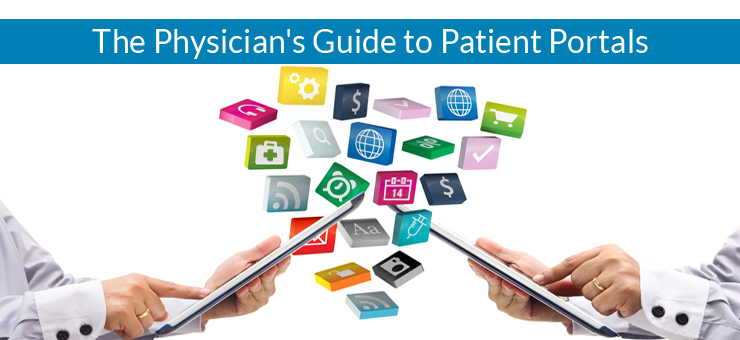While the uncertainty surrounding the adoption of cloud based Electronic Health Records (EHR) systems is gradually dissipating, many practices still remain reluctant to use the patient portals these systems offer.
Patient portals are designed to enhance doctor-patient interaction, by providing the latter with secure access to information which includes their medical records, lab results and appointment schedules, and also to accelerate the whole clinical process while improving the patient-experience.
However, many providers still wonder, why patient portals aren’t the talk of the healthcare industry? Some, are waiting for competitors to start actively using the patient portal before they do. Others, aren’t sure how their patients would respond, and the rest fear portal-management. Which category do you fall in?
Research suggests that these patient portals, if used properly, are not time constraining, but instead contributes towards accelerated clinical procedures, more satisfied clients and a wider revenue stream.
For any given practice, in order for the patient portal to be a tool that lives up to its promise, both the physician and the patient have to be equally engaged in using it. Following steps further explain this concept:
Step 1: Engaging the Physician
A patient who walks into an operation theater cannot operate on himself. He requires a competent team of professionals to do so. Same is the case with patient portals. A patient can fulfill his end of the bargain, by logging in and asking for help, but if the provider doesn’t give feedback, the process will fail. In the majority of EHR systems, the patient portal is present, but are you properly engaged in it?
Respond: The portal is portable and easy to access, and patients simply require signing up to get connected. You must respond to their queries promptly, regardless of the patient volume.
Customize: Moreover, portals are customizable, so customize yours according to your needs. Initially, only utilize a few of its services, for example, send reports, schedule appointments and respond to queries. When you’re comfortable, add more options.
Designate: As with countless physicians, time is probably a constraint for you too, so acquaint your healthcare team with the portal. For instance, allow your PA or nurse to respond to the general queries, or even check your schedule and schedule appointments.
You’ll be amazed at how much time you’ll buy yourself with these portals. With many of their queries solved via the portal, patients will be more satisfied, call less, and make fewer unneeded visits. Moreover, your reputation as a consummate professional will be enhanced, and positive patient reviews, regarding your professionalism, will get you more clients.
Step 2: Engaging the Patient
Research has validated a growing healthcare awareness among common Americans. People want to be up-to-date, especially in matters concerning their own health.
Informing: Educate them in brief, relevant pointers on the reliability and simplicity of the portals via handouts, postcards or even the back of their bill.
Branding: Or use taglines such as “The doctor’s online, are you” on appointment cards, social media or your website. Brand your product using such inexpensive strategies to allure patients to the portal.
Accumulate Details: Ask your front desk staff to write down every patient’s e-mail ID to send them portal usage details or place a portal-registration computer in the reception area.
Remove misconceptions: Moreover, the portal needs to be reliable meaning it shouldn’t crash, easy to use and with simple functionality options, for example a few options on the menu to select from. The patients need to be told this and also that their privacy and security is being protected via login IDs, for example.
In addition to fulfilling patient engagement objectives, the Meaningful Use Stage 2’s incentive payments also require providers to have “at least five percent of their patients using an online patient portal.” Don’t waste time, and get your patient portal online. Implement these strategies and watch the patient portal take your practice to unprecedented highs.

Join the Discussion!